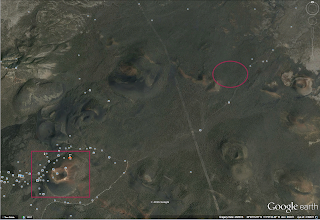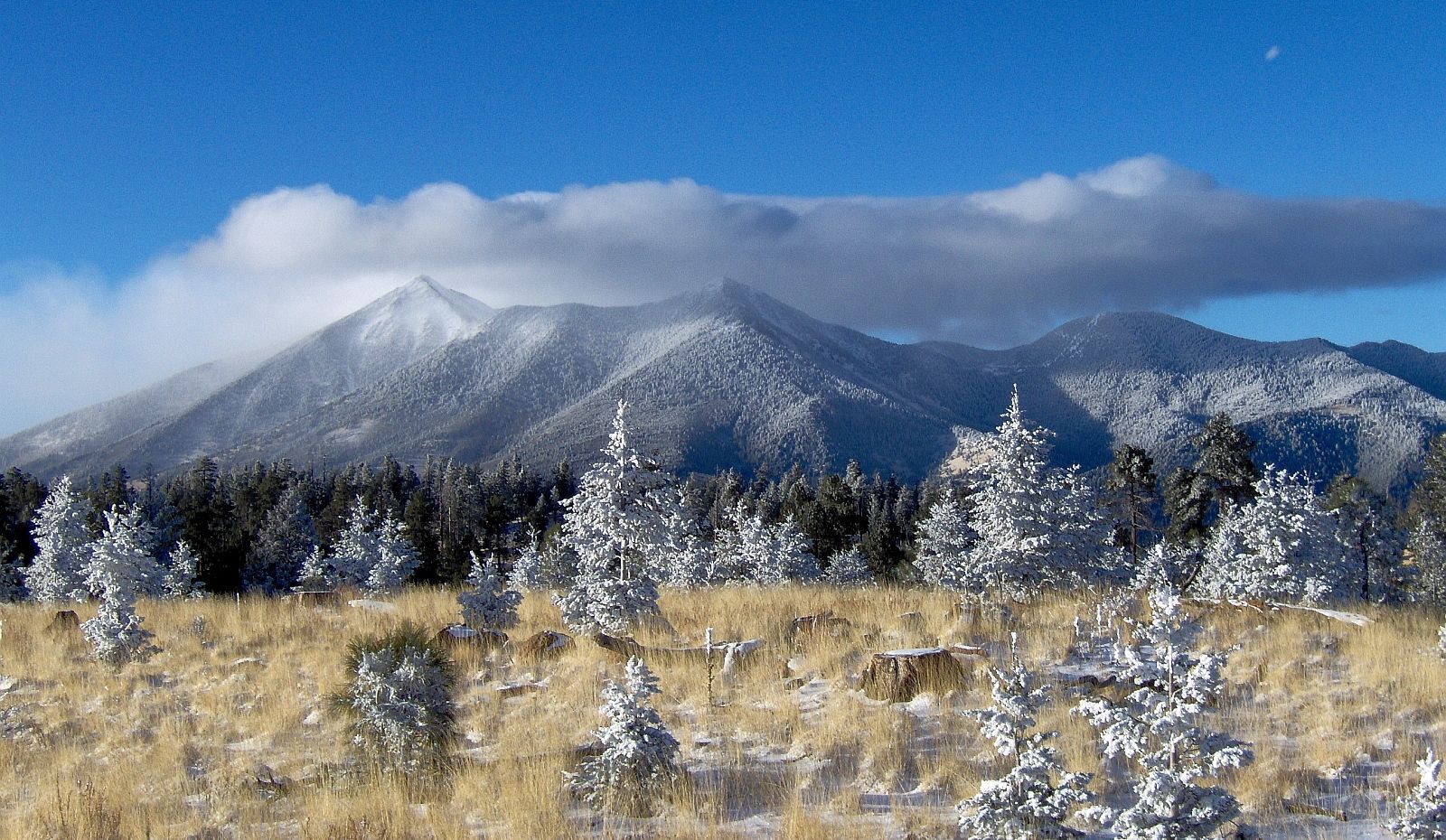Hello everyone. This week I have a post that is a little closer to home...
So, Flagstaff. Such a nice mountain city situated right in the midst of a potentially active volcanic field (SFVF). The most recent activity in the SFVF was the eruption of Sunset Crater less than a thousand years ago. The majority of the volcanic field consists of cinder cones.
 |
| The SFVF. Can you find Flagstaff? |
Thus, what would happen if a cinder cone popped up and started spewing lava out near Sunset Crater?? (This post will detail the eruption. Next week will detail monitoring and safety precautions.)
Here is the a screenshot of the Sunset Crater area from Google Earth. Sunset Crater is in the rectangle. The circle will be where my eruption is going to occur. (I'm not actually saying this is going to happen. This is me just theorizing.)
 |
| We are facing North in this picture. Zooming in. Keep yourself focused on the star to help orient you. |
Yay! We know where we are now. And the volcano just started erupting!!!!!
So the eruption is set for today and I will be using the Ash3d website (https://vsc-ash.wr.usgs.gov/user/session.php) to model my fake eruption. Thank you to my adviser Dr. Greg Vaughan for allowing me to use his Ash3d account.
The volcano erupts for hmmm how about 24 hours. The ash plume height will be 9.447 km high and 0.003 km^3 material will be erupted (the default settings on Ash3d). Below I will have a gif showing where the ash plume will go and a picture showing where ash will be deposited over 48 hours.
The ash cloud seems to generally be headed south, then starts to curl northeast. It heads further south into Arizona before blowing over into New Mexico, Colorado, and Texas.
 |
| Deposit Thickness |
 |
| Zoomed in version of above. |
See you next week when we discuss hazards and affected areas!
Rachel


















